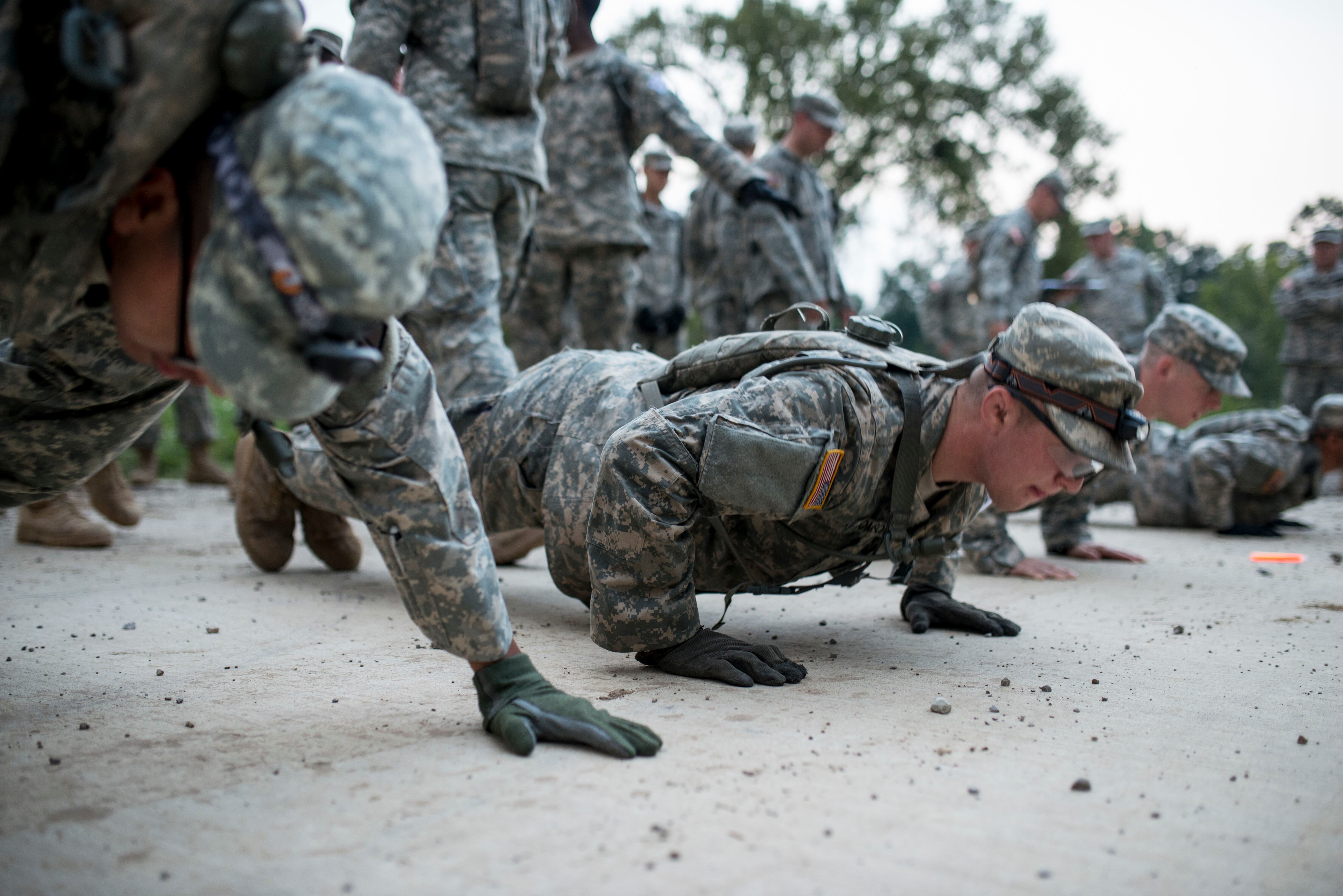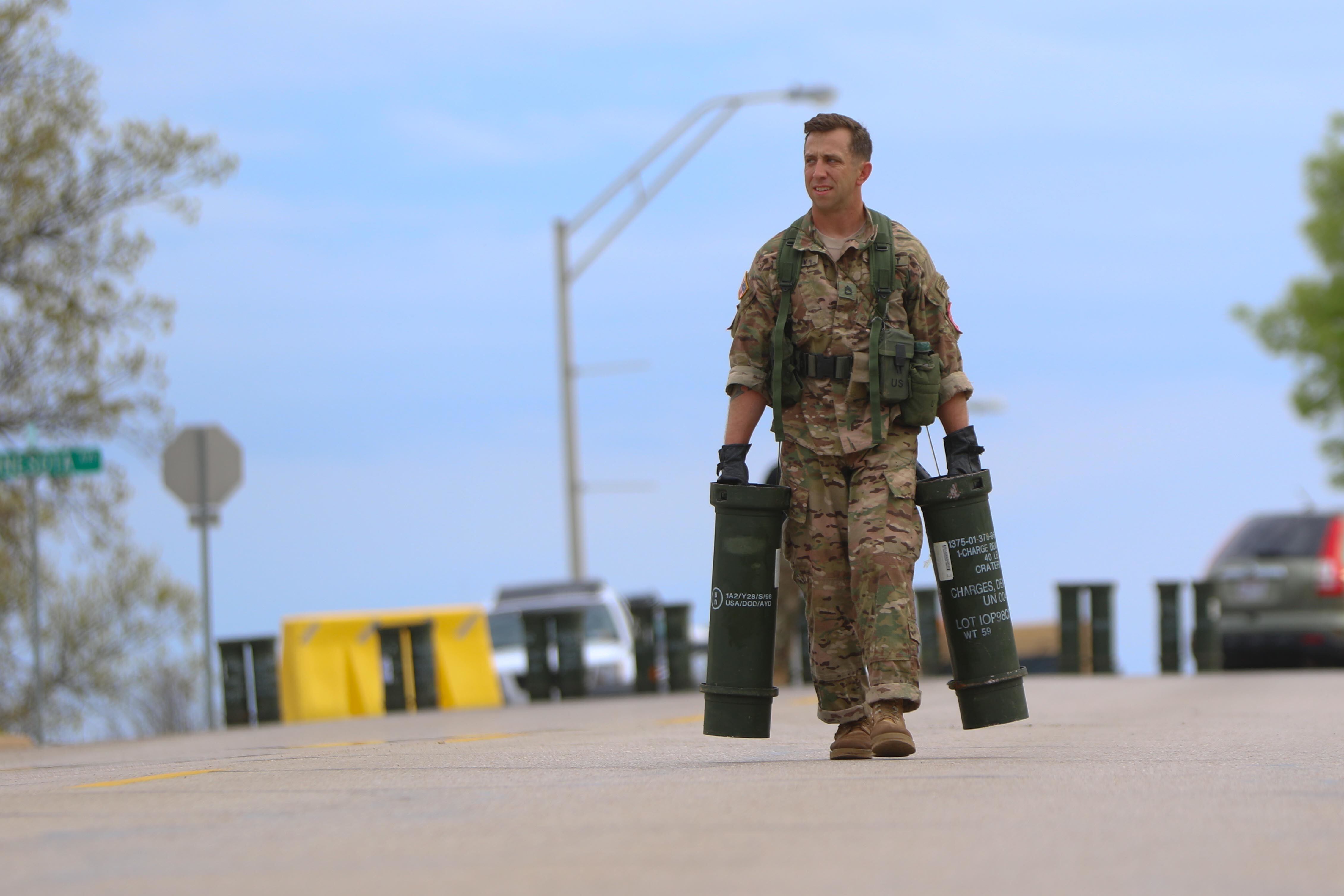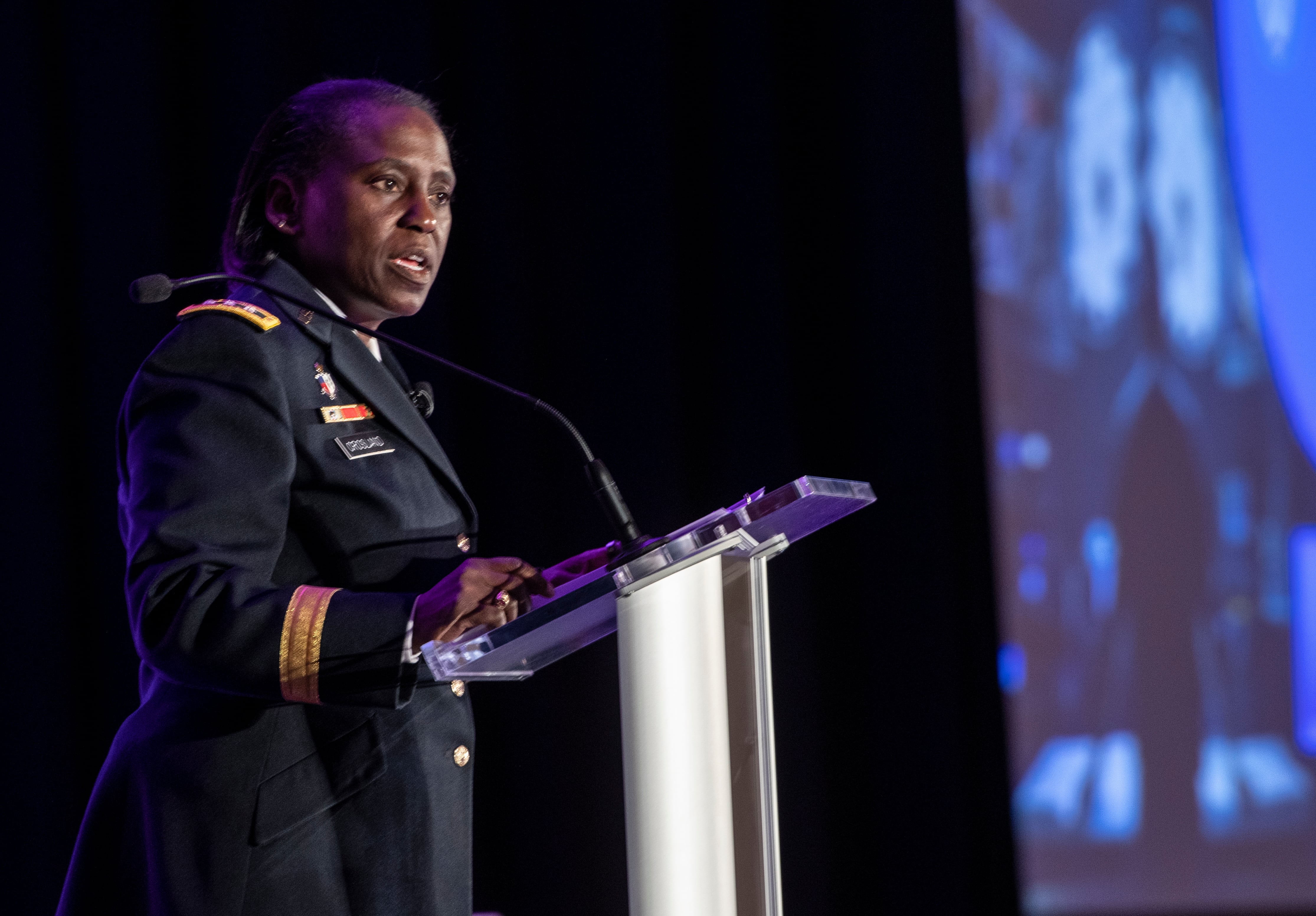As the Army rolls out a new physical assessment for its newest soldiers, the service also is studying the possibility of creating a combat readiness test for troops already in the ranks.
The test, if senior Army leaders decide to pursue one, will be one way to assess soldiers' abilities to meet the demands of their jobs after leaving the training environment, said Command Sgt. Maj. David Davenport, the senior enlisted soldier of Training and Doctrine Command.
"When we hand them over to the operational force, how do we ensure that they can still perform those high physical demand tasks?" Davenport said. "It's about your ability to accomplish your task and how it affects readiness."
This work comes as senior Army leaders have emphasized the importance of readiness and physical fitness.
Acting Army Secretary Patrick Murphy and Army Chief of Staff Gen. Mark Milley have made readiness their top priority, and Sergeant Major of the Army Dan Dailey has repeatedly called for leaders to do PT with their soldiers. Dailey also is pushing to reduce the number of non-deployable soldiers across the force, especially as the Army gets smaller but the demand for troops around the world keeps getting bigger.
The research also lines up with the Army's efforts to integrate women into its combat arms military occupational specialties. Defense Secretary Ash Carter on Dec. 3 lifted all gender-based restrictions on military service, paving the way for women to serve in previously all-male infantry, armor and Special Forces fields and opening nearly 220,000 jobs across the military.
A combat readiness test would be a way to measure soldiers' physical ability, regardless of gender, Dailey said.
"This should be a standards-based Army. If you can fight and win, come on and join the team," he said. "Not just that, we have a commitment to ourselves, to Congress, and to the American people to say that when we do this, we've got to be able to prove we can maintain standards of readiness in the organization. That's what this is exactly meant to do."

U.S. Army Reserve and National Guard Sapper teams from across the U.S. perform pushups at the start of a land navigation course during the 2015 Sapper Stakes competition at Fort Chaffee, Ark., Aug. 30. The teams had to perform 100 pushups as a group at the start of the course and after finding every two points, for a total of eight grid coordinates.The competition is designed to build teamwork, enhance combat engineering skills and promote leadership among the units. (U.S. Army photo by Master Sgt. Michel Sauret)
Photo Credit: Master Sgt. Michel Sauret/Army
The new Occupational Physical Assessment Test that's being rolled out this summer will enable recruits to demonstrate they have the potential to serve in a certain MOS, Dailey said. A test like the combat readiness test will then serve as "a physical test to say you can maintain the qualifications within an MOS," he said.
"Let's take an artillery soldier, for example," Dailey said. "An artillery round weighs 75 pounds, and it doesn't care whether you're a man or a woman. You've got to be able to lift that thing and put it inside of the gun … and you've got to be able to do it over and over and over again. I can't put somebody inside that Howitzer that can't do that and meet those standards, or we have now just degraded the standards of what's required of us to support our wartime missions."
The key purpose of the test is to be an "unemotional" and defined way for soldiers to demonstrate their abilities, Dailey said.
"It's about can you do the tasks required of the job. That's it," he said. "There are going to be men who can't do it, and that's fine, as long as we make sure the standards are met to accomplish the mission."
Davenport cautioned that the Army is still very early its development of the CRT. The name of the test, or even if the Army needs such a test, is still up for discussion, he said.
If the Army moves forward with a combat readiness test, it would come on the heels of the new OPAT, which beginning in June is expected to be administered to new recruits.
The gender-neutral OPAT consists of four events, and it is designed to help determine which military occupational specialties recruits can sign up for based on how well they perform. For example, recruits who want to go into a combat arms job such as infantry will need higher scores than recruits vying for a different MOS.
Work on the OPAT "busted the dam wide open" when it comes to how the Army looks at functional fitness, said Col. Rick Heyward, chief of staff for the Center for Initial Military Training.
The research that went into building OPAT could inform future changes to the decades-old Army Physical Fitness Test. The APFT is "a good measurement of endurance," Heyward said, "but it doesn't measure holistic fitness."
That same research also could inform any future combat readiness test.
"Generally speaking, [a CRT] would look a lot like the OPAT but with different standards or maybe conditions," Davenport said. "The OPAT is a great assessment tool, and it's very efficient. It doesn't require a lot of equipment."

Sgt. 1st Class Tim Shay, a Paratrooper assigned to 307th Engineer Battalion, 3rd Brigade Combat Team , 82nd Aiborne Division carries ammo cases during the Best Sapper Competition at Fort Leonard Wood, Mo., April 21, 2016. (U.S. Army photo by Sgt. Anthony Hewitt/Released)
Photo Credit: Sgt. Anthony Hewitt/Army
The Army also could look to the Marine Corps as it develops the combat readiness test. Since 2008, the Marines have had a combat fitness test that consists of three events designed to simulate what a Marine might encounter on the battlefield. It includes an 880-yard sprint and an ammunition lift.
The Marine test is conducted annually, and a Marine's scores can impact his or her career and promotion chances.
Much of the research underway now for the Army's combat readiness test is being conducted by the Center for Initial Military Training, which is the Army's proponent for fitness, Davenport said. Experts are looking at whether the Army needs such a test, what one should look like, and how often it should be administered.
Any combat readiness test would likely be in addition to the Army Physical Fitness Test, which consists of sit-ups, push-ups and a two-mile run.
The Center for Initial Military Training "is conducting prospective research to identify field-expedient test events that measure muscular strength, power and speed and could supplement the Army Physical Fitness Test," the center said in a statement. "These measures would ensure Army physical readiness assessments better align with the high physical demands of our specific occupational skills, the Army's Warrior Tasks and Battle Drills, as well as Common Soldier Tasks."
Officials with CIMT declined to discuss specifics of the ongoing research because no decisions have been made.
They did say that the research will address three key questions:
• Are we assessing the right fitness domains?
• Are there better ways to assess soldier physical readiness?
• How often should any such assessment take place?
At the end of the day, the goal for CIMT is to find "new and better ways to improve levels of soldier physical readiness," officials said.
"Although I can pass an APFT, can I perform the high physical demand tasks that support my organization's mission?" Davenport said.
TRADOC is focused on thinking about the future of the Army and its readiness, Davenport said.
"How do we make our Army better? How do we make it more ready?" Davenport said. "At the end of the day, it's about getting the right person to the right job to serve our Army."
Michelle Tan is the editor of Army Times and Air Force Times. She has covered the military for Military Times since 2005, and has embedded with U.S. troops in Iraq, Afghanistan, Kuwait, Haiti, Gabon and the Horn of Africa.





